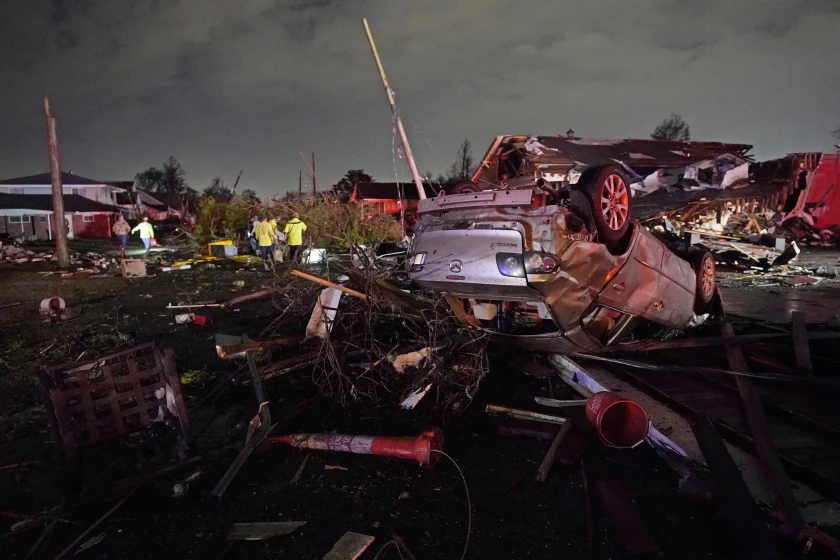A world ravaged by disasters will be hit harder by them in the coming years, according to a report released Monday by the United Nations.
If current trends continue, the world will go from about 400 disasters per year in 2015 to 560 catastrophes per year by 2030, says the scientific report from the United Nations Office for Disaster Risk Reduction (UNDRR). By comparison, from 1970 to 2000, the world suffered 90 to 100 medium- to large-scale disasters a year, according to the report.
The number of extreme heat waves in 2030 will be three times higher than in 2001, and there will be 30% more droughts, the report predicts. It’s not just natural disasters intensified by climate change, it’s COVID-19, economic collapses and food shortages. Climate change has a huge footprint on the number of disasters, the report’s authors say.
People have not understood how much disasters cost today, said Mami Mizutori, head of the UNDRR. “If we don’t get ahead of the curve, there will come a time when we can’t deal with the aftermath of the disaster,” she added. “We are in this vicious circle.”
That means society must reconsider how it finances, manages and talks about disaster risk and what it values most, the report says. About 90% of disaster spending currently goes to emergency care, and only 6% to reconstruction and 4% to prevention, Mizutori said in an interview on Monday.
Not every hurricane or earthquake has to become a disaster, Mizutori added. Much damage is avoided with planning and prevention.
In 1990, disasters cost the world an estimated $70 billion a year. They now cost more than $170 billion, and that’s after adjusting for inflation, the report’s authors note. That also doesn’t include indirect costs that we rarely think about, Mizutori said.
For years, deaths from disasters steadily declined because warnings and prevention improved, Mizutori added. But in the last five years, deaths from disasters are “much higher” than in the previous five years, said report co-author Roger Pulwarty, a meteorologist and sociologist at the US National Oceanic and Atmospheric Administration.
That’s because both COVID-19 and climate change disasters have reached places they didn’t before, such as tropical cyclones in Mozambique, Mizutori said. It’s also because of the way disasters interact with each other and compound the damage, like wildfires with heat waves, or a war in Ukraine plus food and fuel shortages, Pulwarty said.
Pulwarty added that if society changes the way it thinks about risk and prepares for disasters, then the recent rise in disaster deaths could be temporary. Otherwise, it’s probably “the new abnormality.”
Disasters hit poorer countries harder than richer ones, as recovery costs take a bigger slice of the economies of nations that can’t afford them, said co-author Markus Enenkel of the Harvard Humanitarian Initiative.
“These are events that can erase hard-won development gains, sending already vulnerable communities or entire regions into a downward spiral,” he said.
The sheer number of disasters just adds up, like small illnesses that attack and weaken the body’s immune system, Pulwarty said.
The report calls for a review of the way we talk about risk. For example, instead of asking about the chances of a disaster happening this year (say 5%), officials should think about the chances over a 25-year period, which makes it almost certain. Talk of floods in 100 years or chances of something happening a couple of times in 100 years seems a long way off, Mizutori said.
“In a world of mistrust and misinformation, this is a key to moving forward,” said Susan Cutter, co-director of the Institute for Risk Vulnerability and Resilience at the University of South Carolina, who was not involved in the report. “We can make progress in reducing the underlying drivers of risk: inequality, poverty and, most importantly, climate change.”

